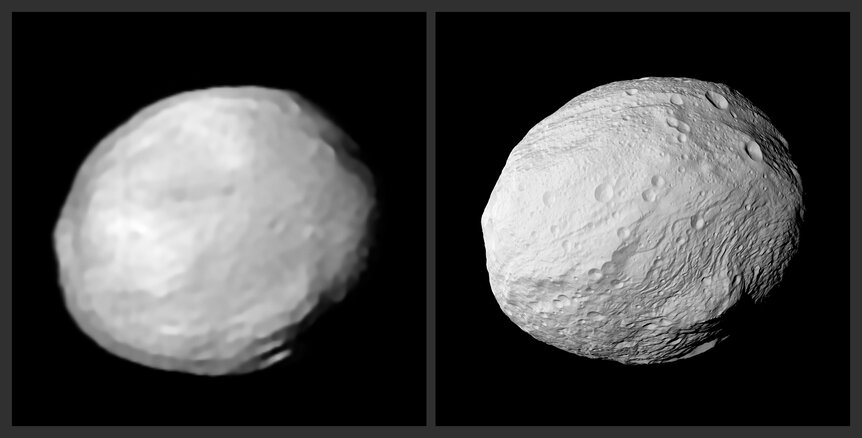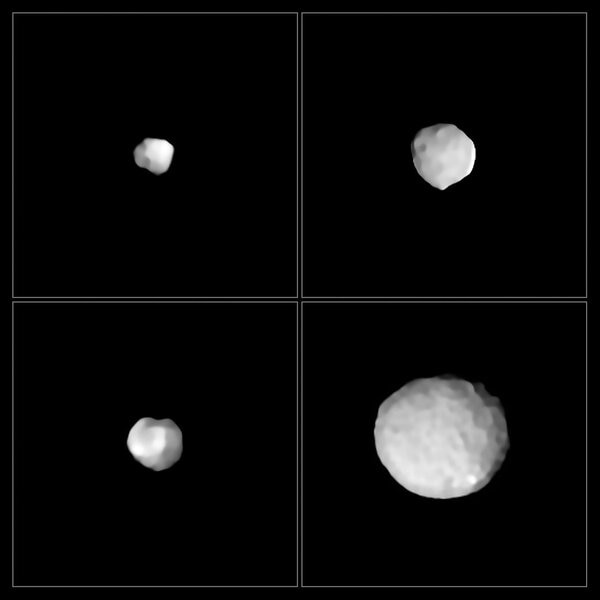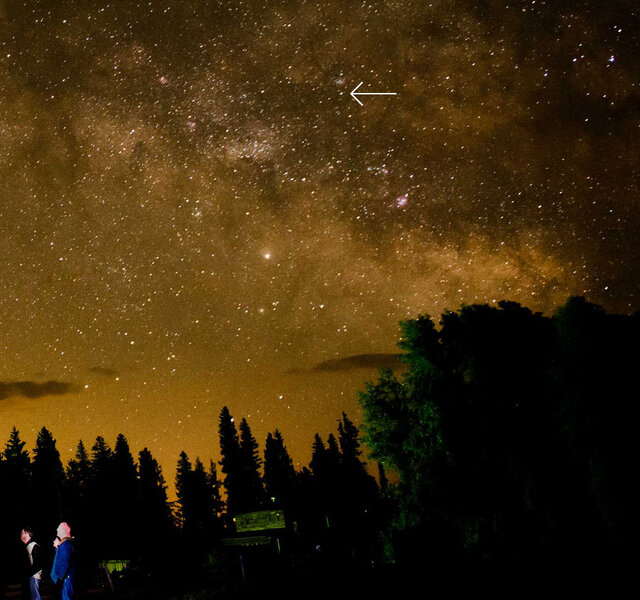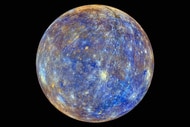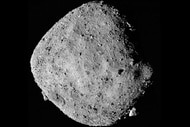Create a free profile to get unlimited access to exclusive videos, sweepstakes, and more!
Incredible image of the protoplanet Vesta taken from Earth
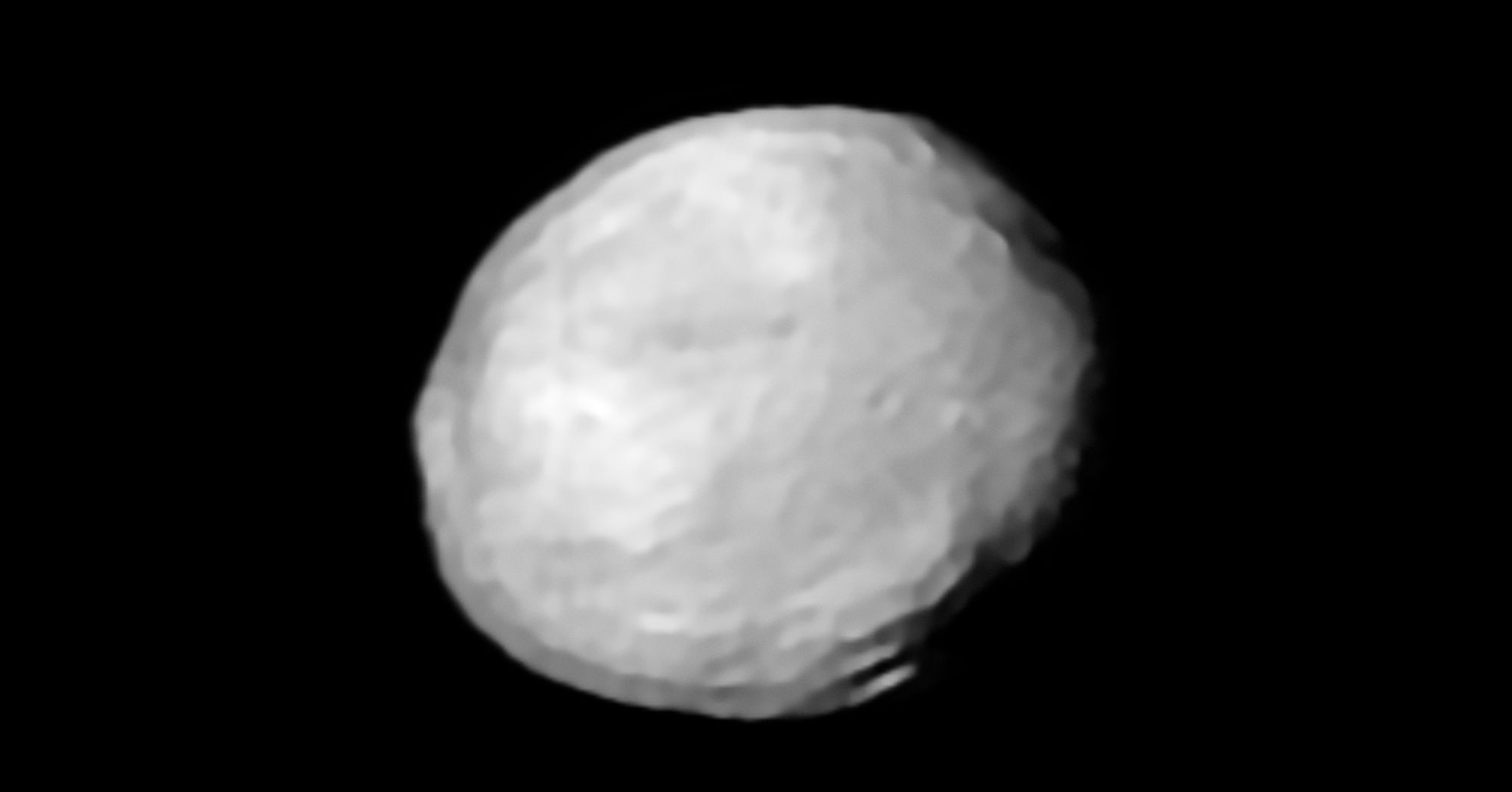
Here's a line I use sometimes when I give talks about asteroids: As an astronomer, asteroids being far away and small is a pain. It makes them difficult to study because we can't see them clearly.
As a human, I'm OK with asteroids being so far away, because they can be dangerous if they get too close.
However, I may now be able to eat my cake and have it, too. Asteroids are far away and small, but a new camera on a huge telescope gives me — hey, literally! — the best of both worlds.
The camera, called ZIMPOL (for Zürich IMaging POLarimeter) is part of SPHERE (Spectro-Polarimetric High-contrast Exoplanet Research), a suite of detectors mounted on the ridiculously huge Very Large Telescope (or VLT) in Chile, an 8.2-meter behemoth. This camera uses a sophisticated technique involving polarized light to greatly enhance the potential resolution of a telescope, allowing it to see much finer details in an astronomical target.
How much finer? Well, I'll be honest: When I first saw this technique used to create images of asteroids in the solar system, I literally doubted it could be this good. I had to email the astronomers involved and then do some more reading before convincing myself, yeah, this is real.
I mean, c'mon. Take a look at this image of the protoplanet* Vesta, the second largest rock in the main belt of asteroids between Mars and Jupiter:
Seriously. Look at the details! The ZIMPOL image is on the left, and on the right is a simulation of Vesta based on a 3D model of it which is itself based on images taken by the Dawn spacecraft. Mind you, Dawn was there. At Vesta.
The ZIMPOL observations were made when Vesta was roughly 170 million kilometers from Earth. Vesta is about 525 km wide, which is pretty small for it being so distant. Its angular size is only about 0.6 arcseconds at that distance, which is incredibly tiny. That's the same size as a U.S. quarter when it's nearly 9 kilometers away!
Yet the detail seen in the ZIMPOL image is incredible. You can easily see the flattened south pole (on the right) due to a huge impact, and the mountain at the lower right. That mountain is 22 kilometers high, which is huge… but it's on Vesta!
You can also see dark spots corresponding to craters in the model, as well as some changes in the terrain. The groove near the top of the model looks like it's in the observations, but to be honest I'm not so sure; the astronomers applied a cleaning technique (called deconvolution) to the image, and that can artificially add sharp features especially near points of high contrast, like the edge of Vesta seen against the dark sky. I used deconvolution a lot back in the bad old days when we had out-of-focus Hubble images after launch, and it's tricky to use. You have to be careful with some things that look real but turn out to be artifacts.
Still. Holy cow. That image is amazing.
They've used ZIMPOL to look at some small asteroids, too. Check these out:
From upper left going clockwise, those are 29 Amphitrite, 324 Bamberga, 2 Pallas, and 89 Julia, and they are (roughly) 200, 230, 510, and 150 kilometers across [note the edge effects once again, especially in Pallas]. They aren't quite as sharp here as Vesta, but for the most part they're smaller and may not have been as close during their observations as Vesta was; Vesta is near opposition, opposite the Sun in the sky, when it's closest to Earth and in fact just barely visible to the naked eye. In fact, I was able to see it easily in binoculars recently from a dark site in Colorado, and my friend Michele Wedel got a nice shot of it:
Mind you, that's a DSLR shot where the stars had streaked a little bit due to Earth's rotation, and you can still see it pretty easily. Of course, it looks a fair bit smaller than it does with the ZIMPOL+VLT (in fact, that's where the term asteroid comes from; star-like, because they appears as tiny dots even in telescopes… usually).
So I'm frankly amazed we can do this kind of imaging from Earth! It doesn't replace sending spacecraft to asteroids — there's nothing like actually being there, especially when you have a large number of instruments to measure lots of fun different aspects of your target — but it's a huge leap in what we can do from here. I'm looking forward to seeing more stunning images like these!
*Vesta and Ceres are the two largest objects in the asteroid belt between Mars and Jupiter, and planetary scientists refer to them as protoplanets, objects that were well on their way to becoming planets in the early days of the solar system before running out of material to grow. That term distinguishes them from the asteroids, which are pieces of rubble and debris that protoplanets build themselves out of.
